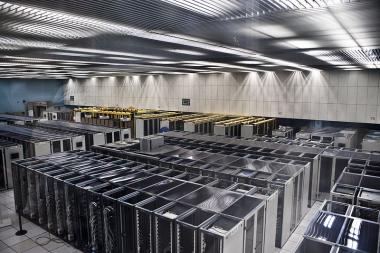Why private cloud services need to be market-priced

Funding private cloud is a different animal than funding traditional data centers. Data centers are built on project-based funding, while private cloud formations need to funded on a per-use basis. Just as public clouds charge their customers by the drink, so should private clouds.

That's the gist of Steve Kaplan's latest post on the new ways private cloud services need to be funded. Kaplan, who is VP of data center virtualization for Presidio, says the current financial structure for most data centers is an "anathema to private cloud," he states. For private cloud, a chargeback funding model is called for. "Chargeback aligns with the dynamics of shared resource pools and facilitates both improved budgeting and planning along with more efficient resource consumption."
Recent surveys I have worked on find only moderate support for the chargeback model thus far. In a survey of 257 IT managers conducted for the Independent Oracle Users Group, part of my work with Unisphere Research/Information Today Inc., we found a majority, 55%, either have or are planning private cloud implementations. Of this group, 37% report having or developing some kind of chargeback method for business users that access enterprise cloud services. In most cases, charges are based on metering, similar to the way they may pay to an outside cloud provider—user organizations are charged based on fixed rates and measured, actual usage of IT resources.
But that also means six out of 10 private cloud organizations don't really have a way of connecting private cloud usage with specific users or departments. So what happens is IT resources are deployed and proliferated, with their true costs not visible to the organization's bean-counters. With public cloud, there is a highly visible cost for each cycle or service provisioned assigned the specific users, and thus, the true costs of IT become transparent. With private cloud, a lot of subsidizing of services takes place, with costs being absorbed into central IT budgets or by one department or another.
The project-funding approach which has filled data centers with servers and systems has resulted in "a data center full of silos containing overlapping or redundant equipment that is both expensive and difficult to manage efficiently. Seventy percent of the traditional IT budget goes just to 'keep the lights on,'” says Kaplan.
Virtualization helps reduce such duplication and inefficiency, but another financial bind rears its head. As things become virtualized, new user requests are simply filled by increasing resource pool capacity. But here's what happens: easily and cheaply attained capacity unleashes unrestrained demand. As Kaplan explains it:
"Virtualized data centers become subject to a phenomenon known as Jevons Paradox whereby reduced technology costs lead to increased demand. User quickly figure out that IT can now 'spin up a VM' rather than going through an extensive and expensive procurement cycle, and their server requests escalate. As resources reach capacity, IT has no option but to ask the next service requestor to bear the burden of required expansion. Pity the business unit with a VM request just barely exceeding existing capacity. IT may ask it to fund a whole new blade chassis, SAN or Nexus 7000 switch. Rather than gaining instant and automatic access to the required infrastructure, the business unit either has to cough up the monies for far more capacity than it requires, or wait until either the next business cycle or until other departments fund the purchase."
Thus, it's important to bring IT -- via private cloud -- into a more comeptitive mode. As Kaplan observes, the chargeback model is one way to bring this about:
"IT must mirror public cloud providers by charging users for resource consumption. An effective chargeback environment reduces time-consuming negotiations and interdepartmental budgetary meetings. A BU purchases computing resources as needed and when the project completes, billing stops. Knowing resource costs in advance is advantageous for BUs in terms of budgeting and planning as well as in pricing products dependent upon IT capabilities."
A pay-as-you-go approach is more efficient because it uses the market model, which restrains overconsumption. "Users naturally want to minimize their costs," says Kaplan. "When a BU manager sees, for example, that her department is being charged each month for the 20 VMs they no longer use, she takes the initiative to have them decommissioned."
(Photo: Wikimedia Commons.)